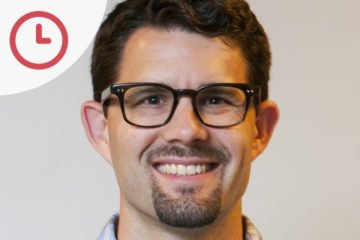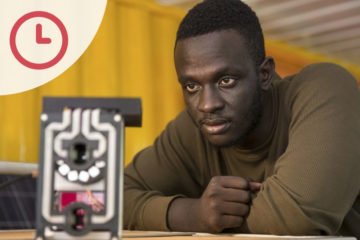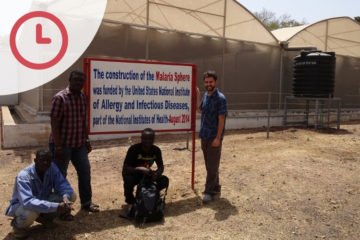Podcast Available on iTunes and Spotify.
Welcome back.
There’s a significant shortage of people working in STEM (Science, Technology, Engineering and Maths). According to STEM.org.uk, this shortage is costing businesses £1.5 billion a year in recruitment, temporary staffing, inflated salaries and additional training costs.
Trying to change that is Professor Katherine Andrews, a parasitologist and the Project Manager of ‘That’s RAD! Science’. The aim of which is to bring STEM careers alive for children through a series of fun and educational picture books.
Katherine is the Author of one of the books in the series titled ‘My Mum is a Parasite Scientist, That’s Rad’.
And she joins me now. Katherine, thanks for coming on the programme.
No problem, I’m very happy to be here.
Why did you decide to create That’s RAD! Science?
I have a 12-year-old daughter and I see young children around me who are very inspired by members of their community, they are often teachers and nurses and doctors and perhaps scientists are not people that young children come across every day in their lives. And I really wanted to make science normal and science careers normal. In particular, the project focuses on women in science as role models, and that’s another thing. What I really wanted was the young children to see grandmothers and mothers and cousins and aunts and other female members of the community as STEM professionals, and to realise that this is something that they can do too.
Would it be fair to say that you’ve drawn inspiration from your daughter and from the relationship that you have there as the basis for the storyline of the book?
Yeah, absolutely. As I said, I have a 12-year-old daughter and trying to explain what her mum does at work can be quite complicated sometimes. So part of the inspiration for the book was trying to be able to explain what I do as a malaria researcher to my own daughter and her friends at school and to put it in a really engaging format. The books that we’re producing are picture books with beautiful colour illustrations cartoons, fun facts and obviously information about the woman in STEM who we’re featuring. The real inspiration was trying to draw on the relationship that I had with my daughter and think about how I could inspire her and the girls around her, but not just girls, children in general, boys and girls, to really get excited about science.
And, as with a lot of this STEM outreach work, it tends to be focused or aimed towards girls. Do you think that you need to, essentially, target young girls to try and get them into science?
We’re not particularly targeting girls, the books are going out to primary schools in general, to boys and girls, to all children. But we’re using these women in STEM as unconscious role models, so the idea is that children are seeing women as scientists with traditionally men were featured more often or thought of more often as being scientists. There is research showing that when children are asked to draw a picture of a scientist often it’s an old male and we really wanted to break these stereotypes a little bit in our own small way.
And I’m looking at the book that you sent us, at the first page and it says ‘my mum drives me crazy talking about parasites’ and there’s a cartoon graphic of a little girl holding, and I quote, a ‘poo sample’. How accessible is the language here and who is the book designed for?
So, it’s designed for children in primary schools, so it could see anywhere between about 4-5, probably up to about 8-10 age group and it’s actually a really hard age range to try and write a children book for because you have children who really are just learning to read and children who are quite advanced readers. And obviously, STEM topics can be very challenging to translate into a children’s picture book, so we’re working very closely with education professionals to try to make sure that the language that we’re using is fairly age-appropriate. You picked on the one cartoon that we really hoped would inspire young children to want to open this book because I think children love anything that’s disgusting and parasitologists are always looking for things in poo so I think it was a natural fit with children’s curiosity and the type of work that many parasitologists do.
Absolutely and of course you’ve got one on parasitology, there’s one on nanotechnology and one on forensic science. Katherine Andrews, thank you very much for joining me.
Pleasure, it was great talking to you.
That was Five Minutes with Katherine Andrews.


